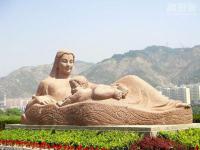Lanzhou Introduction
 Situated in the middle of Gansu, Lanzhou is the capital of this province with a history of more than 2000 years. It has been an important garrison and transport hub sine ancient times. Lanzhou is the only city up to now which the Yellow River passes through the urban district.
Situated in the middle of Gansu, Lanzhou is the capital of this province with a history of more than 2000 years. It has been an important garrison and transport hub sine ancient times. Lanzhou is the only city up to now which the Yellow River passes through the urban district.Originally in the territory of the Western Qiang peoples, Lanzhou became part of the territory of Qin in the 6th century BC. After the fall of the Han Dynasty, Lanzhou became the capital of a succession of tribal states. Mixed with different cultural heritages, the area at present-day Gansu province, from the 5th to the 11th century, became a center for Buddhist study.
Under the Sui Dynasty (581-618) the city became the seat of Lanzhou prefecture for the first time, retaining this name under the Tang Dynasty (618-907). In 763 the area was overrun by the Tibetans and was then recovered by the Tang in 843. Later it fell into the hands of the Western Xia Dynasty (which flourished in Qinghai from the 11th to 13th century) and was subsequently recovered by the Song Dynasty (960-1126) in 1041. The name Lanzhou was reestablished, and the county renamed Lanzhuan.
Under the Ming Dynasty (1368-1644) the prefecture was demoted to a county and placed under the administration of Lintao superior prefecture, but in 1477 Lanzhou was reestablished as a political unit.
The city acquired its current name in 1656, during the Qing Dynasty. When Gansu became a separate province in 1666, Lanzhou became its capital. In 1739 the seat of Lintao was transferred to Lanzhou, which was later made a superior prefecture called Lanzhou.
Today Lanzhou has a population of 3.14 million with 2.07 million at urban area. With its rapid economic development, it has been turned into a major industrial city and transport center in northwest of China.